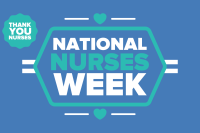Defining the value of nursing
AS PART OF OUR NURSING PRACTICE, we engage in critical thinking, prioritize patient needs, communicate with other members of the interprofessional healthcare team, and coordinate and document patient care. All of this day-to-day activity to keep patients safe may be invisible to patients, their families, and the communities around us because, as one nurse told me, “When good nursing care is practiced, bad things don’t happen.”


Fortunately, nurses have a new resource that highlights our value by discussing our role in patient safety. The third edition of Front Line of Defense: The Role of Nurses in Preventing Sentinel Events, which was jointly produced by The Joint Commission and the American Nurses Association (the two organizations’ first copublication), clearly shows the value of nursing. The Joint Commission’s Nursing Advisory Council recommended this update because so much has changed in healthcare. When the second edition was published in 2007, health information technology and electronic health records were less prevalent, and the imperatives of the Affordable Care Act didn’t exist.
Every chapter in the third edition has been updated to reflect the current issues in healthcare, including the most up-to-date sentinel event data reported to The Joint Commission. Most important, every chapter describes the nurse’s role in preventing harm and error related to perioperative errors, medication errors, falls, suicide, maternal and perinatal injury and death, criminal events, and infections. Nurses accomplish this by using best practices, practical strategies, and tools. Safer care is better care. Mark G. Pelletier, MS, RN, The Joint Commission’s Chief Operating Officer and Chief Nursing Executive said, “After 30 years’ experience in hospital operations, performance and quality improvement, process redesign, and program development— and in my newest role as chief nursing executive with The Joint Commission— I continue to ask myself: What can we as healthcare professionals do to improve the quality of care? What is the nurse’s role in providing patient-centered care that leads to the best possible outcomes? How do we nurses respond to, mitigate, and ideally prevent sentinel events and near misses? And how do we care for and support our colleagues when critical errors are made? Front Line of Defense was written to give nurses the support, knowledge, and practical tips to answer these questions and more.”
Pelletier adds a message for nurses, “I hope that this book gives you the tools and the knowledge to safely impact your patients’ lives. Your patients and their families will be grateful.”
I couldn’t agree more.


Lillee Gelinas, MSN, RN, CPPS, FAAN
Editor-in-Chief
lgelinas@healthcommedia.com
Selected reference
Front Line of Defense: The Role of Nurses in Preventing Sentinel Events. 3rd ed. Oak Brook, IL: Joint Commission Resources; 2019. jcrinc.com/front-line-of-defense-third-edition
ant2-Gelinas-116



















1 Comment.
Thank you for shedding some light upon this subject. I just recently wrote a brief paper about this very issue.
First, it is important to find ways to improve the utilization of soft data. Use metrics that can measure value that has been overlooked. Nurses can give you a pretty good estimate of how important some matters are but these unmeasurable issues never become part of the strategic planning.
We tend to look at the metrics that are easy to interpret and the ones that won’t cause much disruption in the industry but the truth is, in order to get ahead, we must face these issues.
I hope this book is for the executive and administrative teams of every hospital. Nurses already know this but we have more Responsibilities and less Authority.
The restructuring of the healthcare system requires focus on outcomes. Nurses are the most responsible for outcomes. Since, length of stay is getting shorter and the load has increased, how do we assure quality under these time constraints, increasing load and lack of support? The author stated, what is the nurses role? And how do we support our colleagues?
Nurses must reach out to other businesses for support, create buzz, use social media and data. Only nurses can change nursing. Sometimes it is better to ask for an apology than for permission.
-Ema Marques, RN.